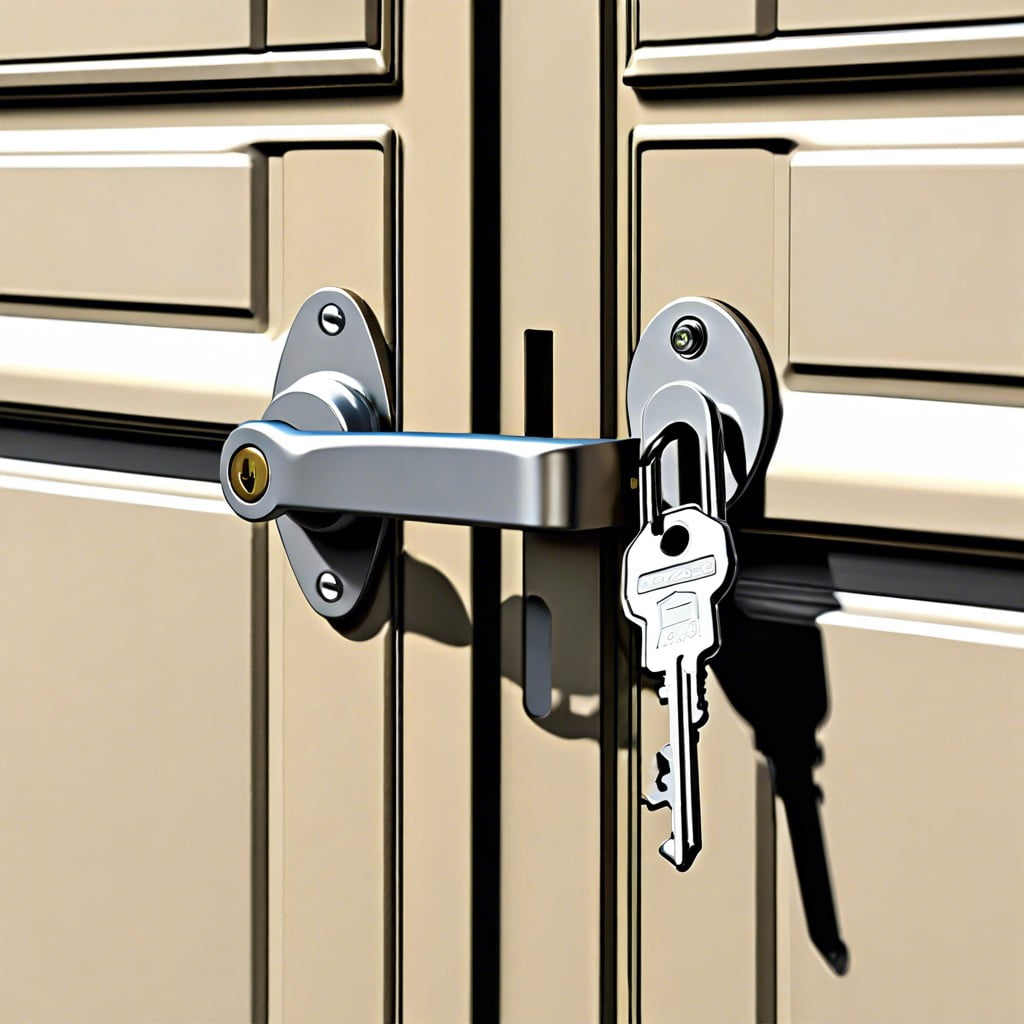Learn how to lock your garage door securely to protect your belongings and maintain peace of mind.
Key takeaways:
- Regularly check existing lock for wear or damage.
- Consider different types of locks for garage doors.
- Follow steps to manually lock your garage door securely.
- Prevent fishing by shielding or removing the emergency release handle.
- Add a garage door monitor for added security and convenience.
Check Existing Lock Functionality

Begin your lock check-up by fully closing the garage door. Look for any visible signs of wear or damage, such as rust or loose bolts on the lock mechanism. Use the key to test the lock, ensuring that it turns smoothly without sticking or resistance. If you have an automatic opener, ensure the manual lock isn’t engaged, as this can cause damage if the opener is activated. Regular lubrication of the lock and keyhole with a graphite-based lubricant can help maintain smooth operation. If you notice any issues during this inspection, consider a repair or replacement to ensure your garage’s security.
Types of Locks for Garage Doors
Choosing the right lock for your garage door is like picking a sturdy knight to guard your castle’s back door. Here’s a rundown of popular options:
Slide Locks (or Latch Locks): These are classic and operated manually. They work by sliding a bolt through the track to prevent the door from moving. It’s a simple, durable, cost-effective method, though not the fanciest protection in the kingdom.
T-Handle Locks: Seen commonly on metal doors, these require a specific key to operate. The T-shaped handles provide a firm grip and offer a satisfying, James Bond-style twist-to-open experience. They’re great if you seek a bit more security, with style to boot.
Deadbolts: Just like your front door might have, you can install a deadbolt on your garage door for additional security. These are particularly handy if you use your garage as a workshop or store high-value items.
Smart Locks: Welcome to the future! These can connect to your home security system and notify you on your smartphone if the garage door opens unexpectedly. Ideal for tech-savvy homeowners who like to keep things under control remotely.
Each type offers different levels of security and ease of use. Consider what feels most secure and manageable for your spiffy garage setup!
Steps to Lock Garage Door Manually
First, locate the manual locking mechanism on your garage door, typically found in the center. It may have a handle or a T-bar. If you’re feeling like a detective, this is where you get to use your keen eye for detail!
Next, ensure the door is fully closed. Pulling on the manual lock while the door is ajar is like trying to buckle your seatbelt with the car door open – not very effective.
Turn the handle or rotate the T-bar until you hear a satisfying ‘click’. That’s the sound of security, my friend! Make sure it’s firmly in place; a loose lock is about as useful as a chocolate teapot.
Lastly, give the door a gentle tug to confirm it’s locked. It shouldn’t rise more than a few inches. If it does, you might need to repeat the steps or check for issues. Remember, a well-locked door should resist casual attempts to open as if it’s saying, “Not today, intruders!”
Prevent Fishing
Thieves have quite the fishing talent, but instead of fish, they’re angling for the release handle on your garage door. To put a stop to these garage fishing trips, shield the emergency release handle. A simple shield, which you can either buy or DIY out of a small piece of metal or plastic, blocks access to the handle. This makes it nearly impossible for the hook to catch and release the door from the outside.
Another effective strategy is to remove the garage door emergency release handle altogether and keep it somewhere handy inside the garage. This way, no handle, no way to fish! Alternatively, secure the handle with a zip tie. It needs to be strong enough to prevent fishing, but ensure it can be broken in case you need to manually open your garage door during an emergency. Ah, the things we do to keep those fishy burglars at bay!
Add a Garage Door Monitor
Imagine forgetting whether you closed the garage door as you rush to the airport for a long-awaited vacation. A garage door monitor is your tech-savvy best friend that sends updates directly to your smartphone about the status of your garage door. With this device, you can quickly check if the door is securely closed or even remotely control it to shut if needed.
This system typically involves installing a sensor on the garage door and a hub inside your home. The sensor communicates with the hub, which then connects to your internet network, allowing you to access real-time information from anywhere through an app. This simple setup not only enhances security but also adds a layer of convenience to daily routines. Just think, no more turning the car around to check the door!